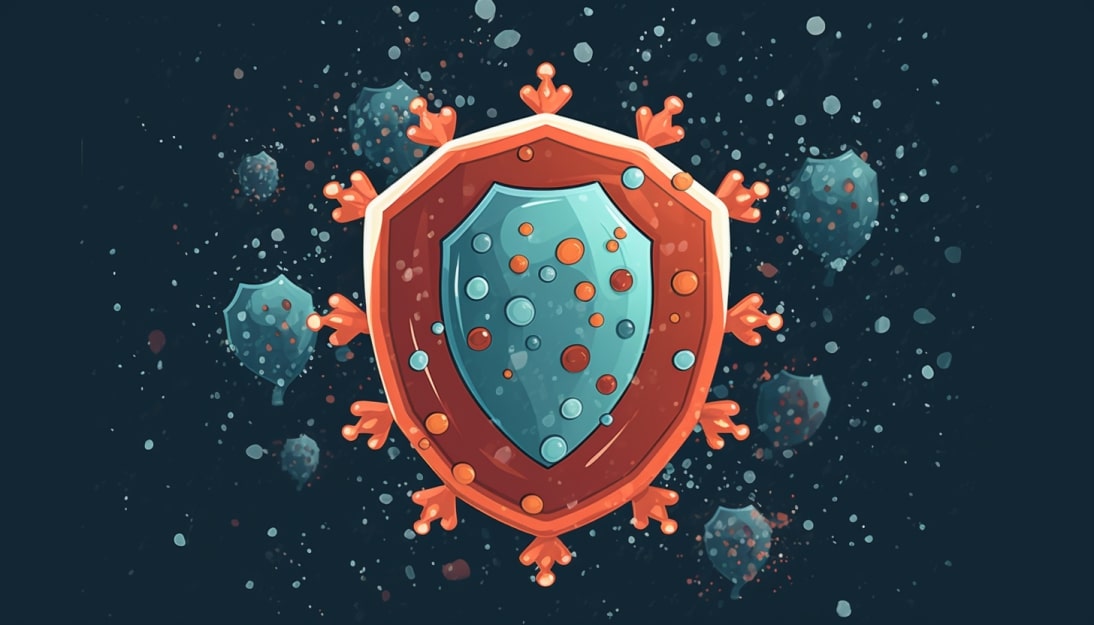Massage for Immune System Health: Strengthen Your Defences
In an era where health is wealth, we’re always on the lookout for that magical elixir to boost our immune system. From superfoods to exercise regimens, there’s an ocean of information, often confusing and contradictory. But what if the key to enhancing your body’s defences lies in the calming, healing touch of a massage? Yes, you heard it right. Massage, long celebrated for its relaxation and stress-relieving benefits, also plays a pivotal role in bolstering your immune system. This article will guide you through the enchanting world of massage, unveiling its surprising benefits for immune health and equipping you with practical tips to incorporate it into your wellness routine.
The Science of Touch: How Does Massage Work?
Understanding the biology behind the soothing strokes of a massage can make your experience more meaningful and engaging. Massage works on the principle of touch therapy. The physical contact involved in a massage activates your body’s pressure receptors, which communicate with the brain to release endorphins, the body’s natural painkillers.
To comprehend how massage aids in strengthening the immune system, we first need to delve a little deeper into what our immune system is and how it works. The immune system is our body’s defence mechanism against harmful invaders such as bacteria, viruses, and other pathogens. It comprises various cells, tissues, and organs that work together to keep us healthy.
The primary cells involved in immune responses are white blood cells or leukocytes. These cells are produced and stored in many locations in the body, including the spleen, lymph nodes, and bone marrow. Leukocytes are on constant patrol in our body, seeking out and destroying disease-causing organisms or substances.
So, where does massage fit into this picture? Massage therapy has been found to stimulate the production of white blood cells, thus bolstering our immune system. Moreover, it aids in the reduction of cortisol, a stress hormone that can wreak havoc on our immunity when present in excess amounts.
Exploring the vast body of research on massage and immunity unveils compelling evidence of its immune-enhancing effects. A notable study published in the Journal of Alternative and Complementary Medicine found that participants who received a 45-minute massage had an increased number of lymphocytes, which are the immune system’s first line of defence.
Key Takeaway: Understanding the immune system and the science behind massage helps appreciate its benefits for immune health. Regular massage can stimulate the production of white blood cells and reduce stress, thus strengthening our immunity.
The Immune-Boosting Benefits of Massage
The benefits of massage go beyond relaxation and pain relief. They seep into the realm of enhancing our body’s defensive mechanisms. Let’s explore these benefits in detail.
Massage has been found to increase the activity of natural killer cells, the body’s frontline soldiers against infections and cancer. These cells play a crucial role in our immune response, eliminating cells that are infected with viruses or have turned cancerous. Massage strengthens our body’s defences by boosting natural killer cell activity, keeping diseases at bay.
In today’s fast-paced world, stress has become an inescapable part of life. Chronic stress can have detrimental effects on our immune system, making us more susceptible to illnesses. Massage therapy helps in combating stress by reducing the levels of cortisol, the primary stress hormone. Lower cortisol levels translate to a more balanced and robust immune system.
Another immune-boosting benefit of massage lies in its ability to promote better sleep. Adequate sleep is crucial for maintaining a healthy immune system, as it is during sleep that our body repairs and regenerates itself. Massage aids in improving sleep quality by inducing relaxation and reducing stress levels, allowing our immune system to function optimally.
Key Takeaway: Massage can enhance immune health by increasing natural killer cell activity, reducing stress and cortisol levels, and promoting better sleep.
Choosing the Right Massage for Your Immune Health
There are various types of massages, each with its unique techniques and benefits. It’s essential to choose the right massage to optimize immune health. Here are some popular massage types that can help strengthen your immunity.
Swedish Massage
Swedish massage is one of the most common forms of massage therapy. It involves a combination of long, gliding strokes, kneading, and tapping techniques to relax the muscles, improve circulation, and relieve stress. This gentle and soothing massage can be an excellent choice for those looking to enhance their immune system while also enjoying a relaxing experience.
Deep Tissue Massage
Deep tissue massage targets the deeper layers of muscle and connective tissue, using slow strokes and deep pressure to release chronic muscle tension. This type of massage can be beneficial for those with a higher pain threshold or experiencing chronic pain, inflammation, or muscle injuries. The release of muscle tension can help improve overall immune function by reducing stress and promoting relaxation.
Shiatsu Massage
Shiatsu is a traditional Japanese massage technique that uses finger pressure on specific points of the body to stimulate the flow of energy or “qi” (pronounced “chee”). This massage type aims to balance the body’s energy pathways, known as meridians, to improve overall health and well-being. Shiatsu can be an excellent choice for those interested in a holistic approach to immune health, as it helps to restore balance and harmony within the body.
Aromatherapy Massage
Aromatherapy massage combines the benefits of massage with the therapeutic effects of essential oils. These oils, extracted from plants, have various health benefits, including immune-boosting properties. Aromatherapy massage can be tailored to your specific needs by selecting oils with immune-enhancing properties, such as eucalyptus, tea tree, or lavender.
Key Takeaway: Choosing the right massage type is crucial for optimal immune health benefits. Swedish, deep tissue, shiatsu, and aromatherapy massages all offer unique benefits that can help strengthen your immune system.
Practical Massage Techniques for Immune Health
Now that you know the types of massages that can bolster your immunity, it’s time to learn some practical massage techniques that you can incorporate into your daily routine. Self-massage can be an effective and convenient way to reap the immune-boosting benefits of massage, especially when you can’t make it to a professional massage therapist.
Simple Self-Massage Techniques
One simple technique you can start with is the lymphatic drainage massage. This type of massage aims to stimulate the flow of lymph fluid, which carries waste products away from the tissues and supports immune function. Here are the steps for a simple lymphatic drainage self-massage:
- Start by gently massaging the lymph nodes on your neck. Use your fingers to make circular motions on the sides of your neck.
- Move down to the lymph nodes under your arms. Use the same circular motions to massage this area.
- Finally, massage the lymph nodes in your groin area, again using circular motions.
Remember, the goal of lymphatic drainage massage is to direct lymph fluid towards the lymph nodes. The lymph nodes filter the lymph fluid and remove toxins and harmful substances.
When to Massage: Timing and Frequency
While there is no one-size-fits-all answer to how often you should get a massage for immune health, a general guideline is to aim for at least once a month. However, if you’re performing self-massage, you can do it more frequently, even daily. The best time for a massage is when you feel relaxed and have enough time to unwind and enjoy the experience.
Precautions and Contraindications
While massage has numerous benefits, it’s important to be aware of certain precautions and contraindications. If you have a medical condition such as heart disease, diabetes, or skin conditions, it’s best to consult with a healthcare professional before starting any massage routine. Similarly, if you’re pregnant, certain types of massage may not be suitable for you. Always listen to your body and stop if you feel any discomfort during a massage.
Key Takeaway: Simple self-massage techniques, such as lymphatic drainage massage, can be easily incorporated into your daily routine to enhance immune health. However, it’s important to consider the timing, frequency, and any potential contraindications to ensure a safe and beneficial massage experience.
Your Health in Your Hands: Integrating Massage into Your Wellness Routine
Taking charge of your health is an empowering journey. Massage, with its immune-boosting benefits, is a powerful tool you can incorporate into your wellness routine. But how do you go about it? It’s about setting up a regular massage routine and incorporating other healthy habits that complement the effects of massage on immune health.
Setting Up a Regular Massage Routine
Starting a regular massage routine doesn’t require elaborate planning or massive lifestyle changes. It’s about finding what works best for you and sticking to it. Here are some tips to help you set up a regular massage routine:
- Decide on the frequency: The frequency of massages depends on your individual needs and lifestyle. As a general rule, aim for at least one professional massage session per month. For self-massage, you can do it more frequently, even daily.
- Choose a convenient time: The best time for a massage is when you feel relaxed and have enough time to unwind. It could be early in the morning to start your day on a positive note, or in the evening to alleviate the stress of the day.
- Create a soothing environment: Make your massage sessions more enjoyable by creating a calm and soothing environment. Dim lights, relaxing music, and essential oils can enhance your massage experience.
Incorporating Other Healthy Habits for Immune Health
While massage is a powerful tool for immune health, it’s most effective when combined with other healthy habits. Here are some lifestyle changes you can incorporate alongside your massage routine:
- Eat a balanced diet: A diet rich in fruits, vegetables, lean proteins, and whole grains provides the nutrients your immune system needs to function optimally.
- Stay hydrated: Water plays a crucial role in the functioning of every system in your body, including the immune system. Aim for at least 8 glasses of water a day.
- Exercise regularly: Regular physical activity can boost your immune system and help fight off infections.
- Get enough sleep: Quality sleep is essential for a healthy immune system, as it’s during sleep that your body repairs and regenerates itself.
- Manage stress: Chronic stress can weaken your immune system and make you more susceptible to illnesses. Techniques such as yoga, meditation, and deep breathing can help manage stress.
Key Takeaway: Setting up a regular massage routine and incorporating healthy habits into your lifestyle can significantly enhance your immune health. Remember, consistency is key when it comes to health and wellness.
Embark on Your Journey to Stronger Immunity
Stepping into the world of massage therapy opens the doors to a holistic approach to immune health. With the knowledge you’ve gained, you’re well-equipped to integrate massage into your wellness routine and reap its immune-boosting benefits. As you embark on this journey, remember that every small step counts and consistency is key. Be patient with yourself, listen to your body, and adjust your routine as needed. Here’s to stronger immunity and a healthier, happier you!
Frequently Asked Questions
Can I perform immune-boosting massages on myself?
Absolutely! Self-massage is a convenient and cost-effective way to reap the immune-boosting benefits of massage. Techniques such as lymphatic drainage massage can be easily learned and incorporated into your daily routine. However, for a deeper and more thorough massage, a professional massage therapist would be the ideal choice.
How often should I get a massage for immune health?
The frequency of massages depends on your individual needs and lifestyle. As a general rule, aim for at least one professional massage session per month. For self-massage, you can do it more frequently, even daily. Always listen to your body and adjust your routine as needed.
Can I combine different types of massages?
Yes, you can combine different types of massages to optimize their immune-boosting benefits. For example, you could alternate between Swedish and deep tissue massage or add aromatherapy to your massage sessions. It’s all about finding what works best for you.
Are there any risks or side effects to consider?
While massage is generally safe, certain precautions should be taken. If you have a medical condition such as heart disease, diabetes, or skin conditions, it’s best to consult with a healthcare professional before starting any massage routine. Similarly, if you’re pregnant, certain types of massage may not be suitable for you. Always listen to your body and stop if you feel any discomfort during a massage.
Can massage replace medical treatment?
No, massage should not replace medical treatment. Instead, it should be used as a complementary therapy to support your overall health and wellbeing. If you have a medical condition, always consult with your healthcare provider before starting any new therapy.
Sources
- “Massage Therapy and Your Immune System.” Bvhealthsystem.org, 2022, www.bvhealthsystem.org/expert-health-articles/massage-therapy-and-your-immune-system. Accessed 23 May 2023.
- TMC Chiswick. “Massage Benefits the Immune System | the Massage Centre Chiswick.” The Massage Centre Chiswick, 7 Oct. 2019, www.tmc-chiswick.com/blog/benefits-of-massage-on-your-immune-system/. Accessed 23 May 2023.
- Live Science Staff. “Massages Boost the Immune System.” Livescience.com, Live Science, 30 May 2013, www.livescience.com/34910-massage-benefits-immune-system-100908.html. Accessed 23 May 2023.




